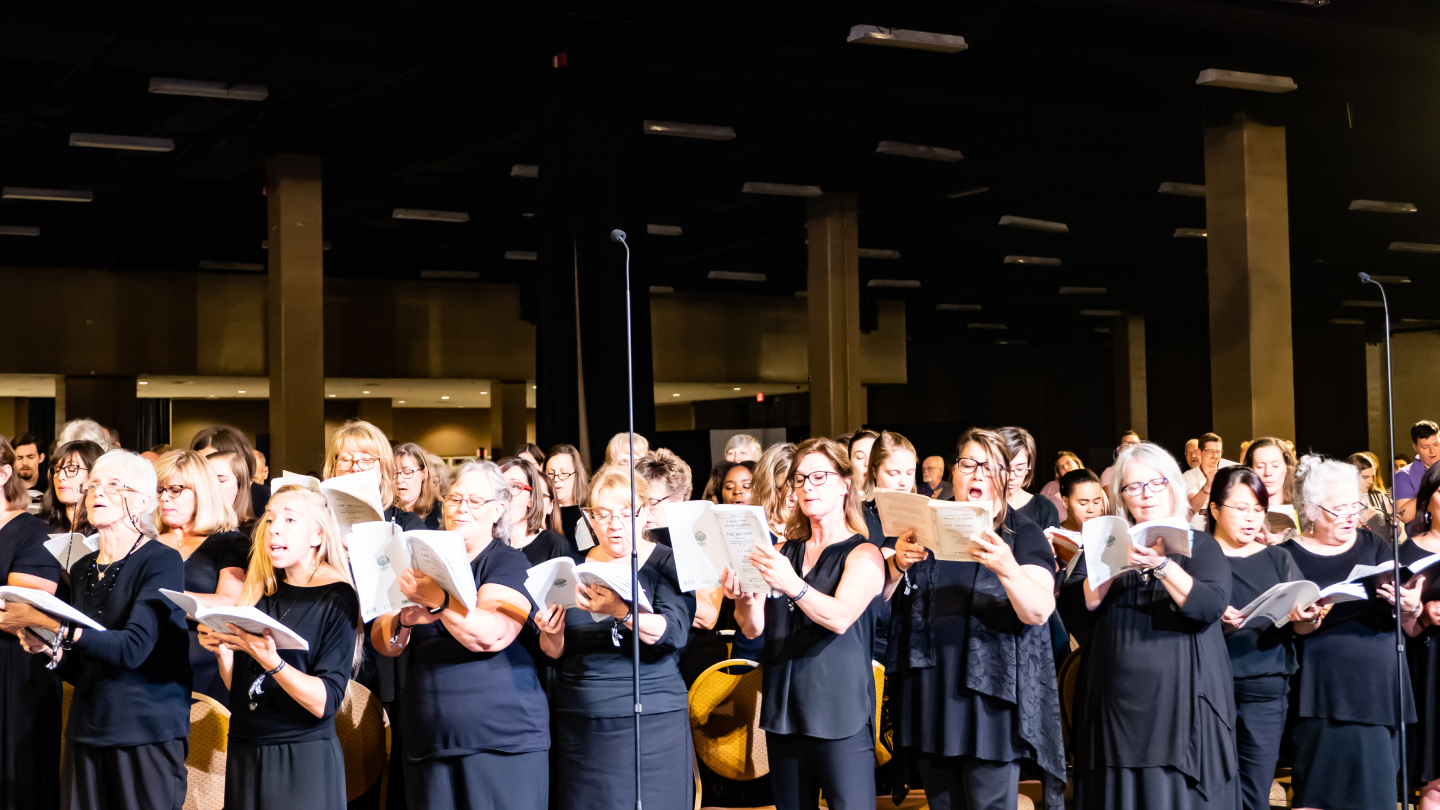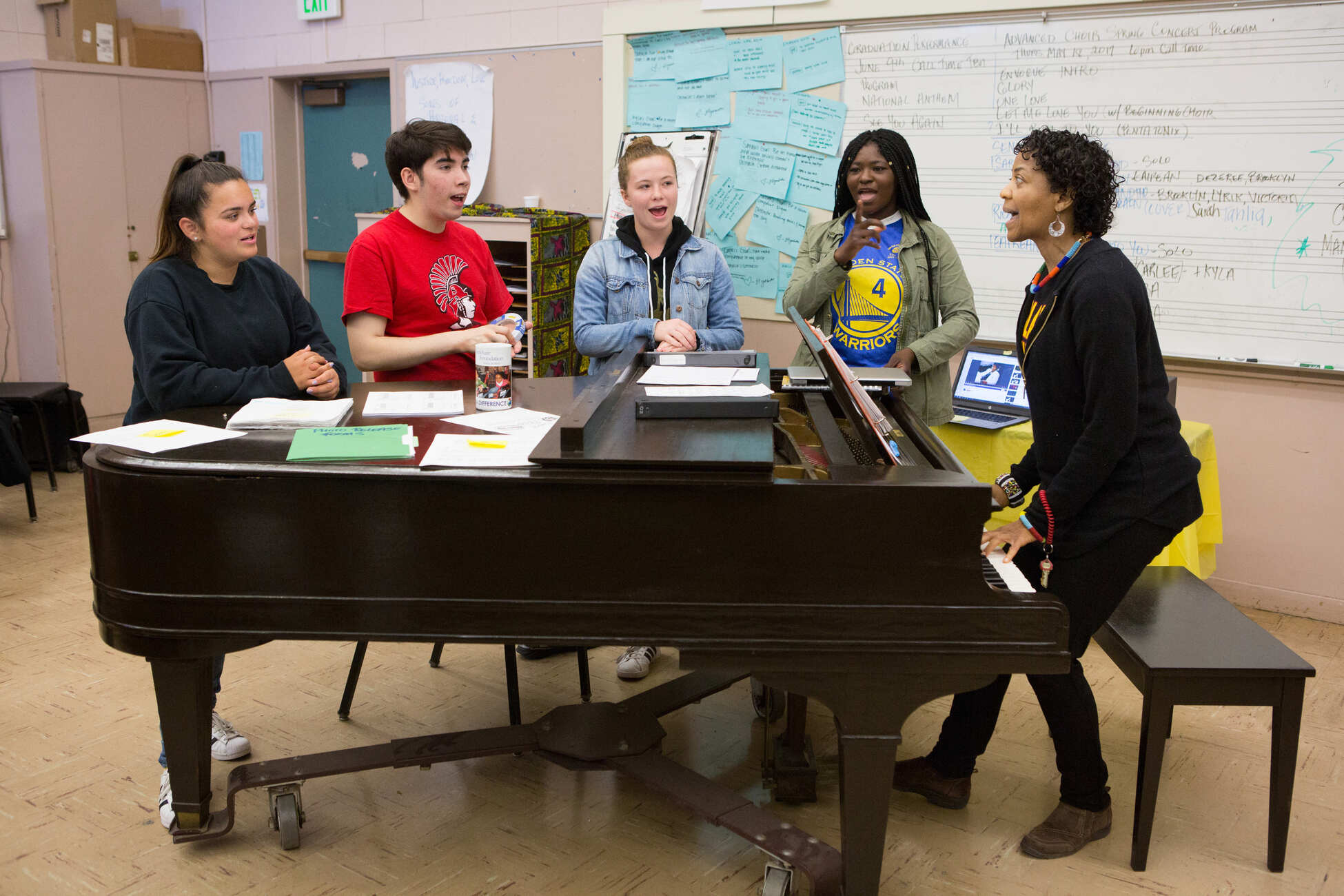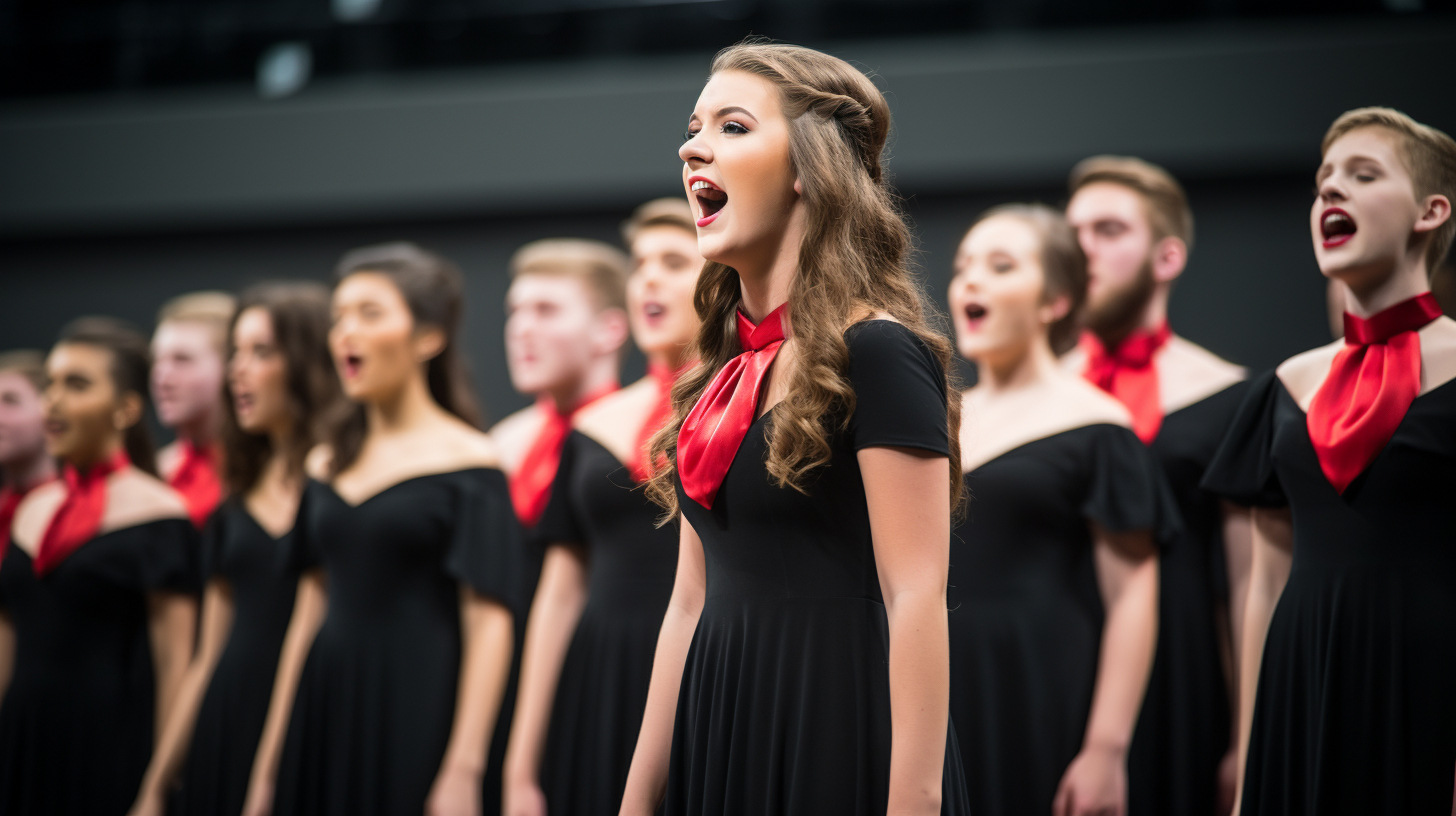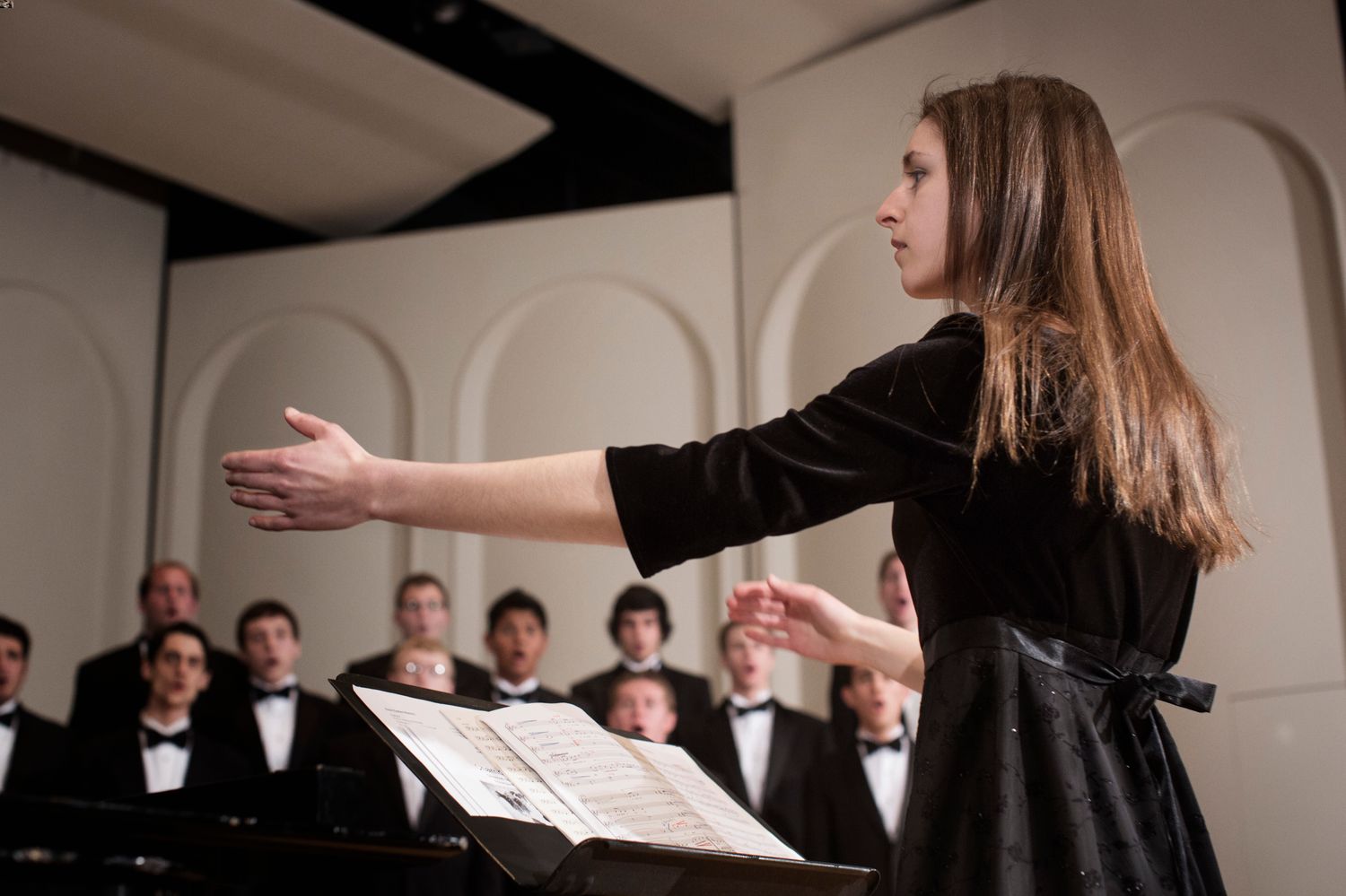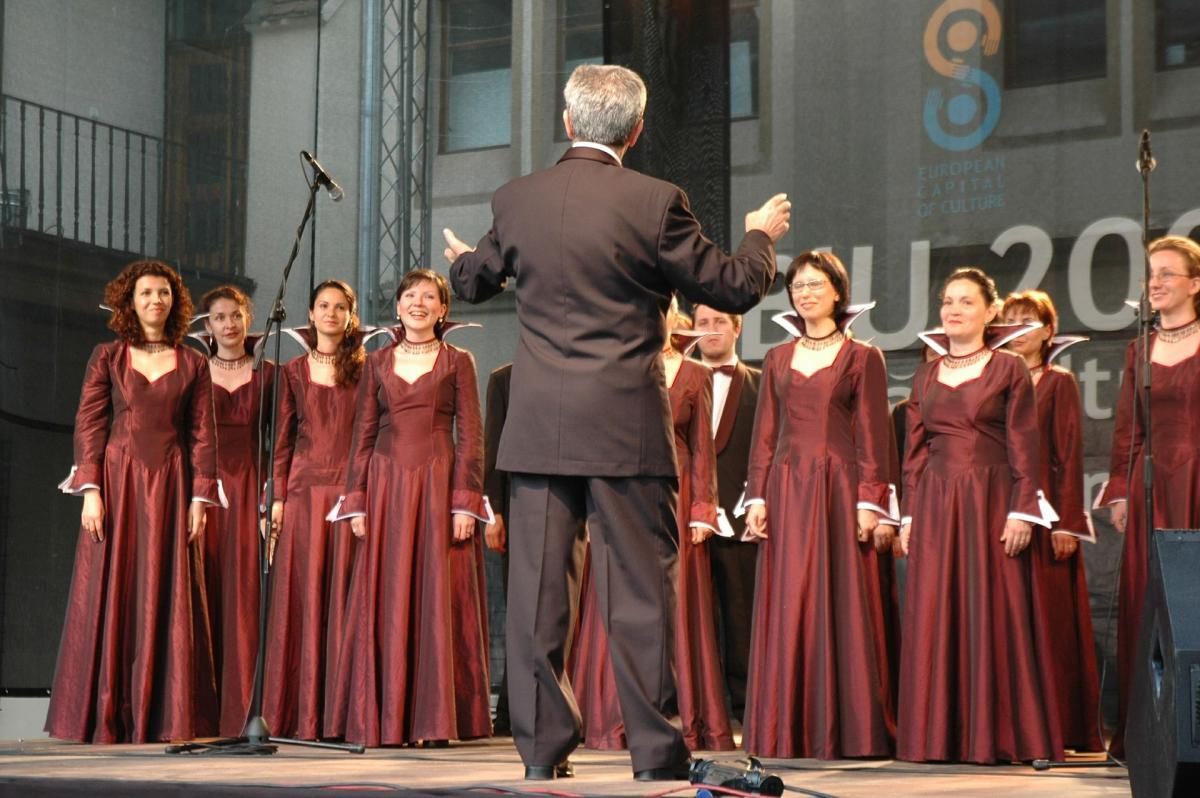Home>Production & Technology>Choir>How To Sing With A Choir


Choir
How To Sing With A Choir
Published: February 23, 2024
Learn how to sing with a choir and improve your vocal skills. Discover tips and techniques for singing harmoniously with a choir. Unlock your potential today!
(Many of the links in this article redirect to a specific reviewed product. Your purchase of these products through affiliate links helps to generate commission for AudioLover.com, at no extra cost. Learn more)
Table of Contents
Introduction
Joining a choir is a remarkable journey that offers not only the joy of singing but also the opportunity to be part of a harmonious community. Whether you're a seasoned vocalist or a novice singer, the experience of singing with a choir can be incredibly fulfilling and rewarding. It's a chance to blend your voice with others, creating something beautiful and powerful together.
Singing with a choir is not just about vocal prowess; it's about collaboration, teamwork, and the shared passion for music. As you embark on this musical endeavor, you'll discover the magic of harmonizing with fellow singers, the exhilaration of performing in front of an audience, and the deep sense of camaraderie that comes with being part of a choir.
Throughout this article, we'll delve into the intricacies of singing with a choir, from choosing the right ensemble to mastering the art of blending your voice seamlessly with others. We'll explore the role of the conductor, the dynamics of rehearsals, and the thrill of performing as part of a unified vocal force. Whether you're drawn to the classical choral repertoire, contemporary a cappella, or gospel music, the principles of singing with a choir remain universal.
So, if you're ready to embark on a musical journey that transcends individual performance and celebrates the collective spirit of choral singing, then fasten your seatbelt as we explore the ins and outs of singing with a choir. Get ready to immerse yourself in the rich tapestry of choral music and experience the transformative power of harmonizing with a group of passionate singers.
Choosing the Right Choir
When embarking on your choral journey, the first crucial step is selecting the right choir. With a myriad of choirs spanning various genres and styles, it's essential to find an ensemble that aligns with your vocal abilities, musical preferences, and personal aspirations. Here are some key considerations to guide you in this pivotal decision-making process:
-
Musical Genre: Determine the type of music that resonates with you. Whether it's classical, jazz, gospel, pop, or world music, there's a choir out there tailored to your musical tastes.
-
Vocal Skill Level: Assess your vocal proficiency and seek a choir that matches your skill level. Some choirs cater to experienced singers, while others warmly welcome beginners, providing a nurturing environment for skill development.
-
Rehearsal Commitment: Consider the choir's rehearsal schedule and location. Ensure that it aligns with your availability and proximity, making it feasible for you to attend rehearsals consistently.
-
Artistic Direction: Research the choir's artistic director or conductor. Their leadership style and musical vision greatly influence the choir's dynamics and repertoire, so finding a conductor whose approach resonates with you is pivotal.
-
Performance Opportunities: Explore the choir's performance history and upcoming engagements. If you're eager to showcase your talents on stage, a choir with regular performance opportunities may be the perfect fit.
-
Community Engagement: Some choirs actively engage with their local community through concerts, outreach programs, and collaborative projects. If community involvement is important to you, seek a choir that embraces these initiatives.
-
Social Dynamics: Consider the social aspect of choir membership. Look for a group with a welcoming and inclusive atmosphere, fostering friendships and a sense of belonging beyond the realm of music.
By carefully considering these factors, you can embark on your choral journey with confidence, knowing that you've chosen a choir that not only nurtures your musical growth but also enriches your overall experience through shared passion and camaraderie.
Learning the Music
Once you've found the right choir and become a part of the ensemble, the next step is delving into the intricacies of learning the music. Whether it's a timeless classical piece, a soul-stirring gospel arrangement, or a contemporary choral composition, mastering the music is fundamental to delivering a captivating and harmonious performance. Here's a comprehensive guide to navigating the process of learning the music within a choir:
-
Score Familiarization: Begin by acquainting yourself with the musical score. Take the time to study the notes, dynamics, phrasing, and any markings provided by the conductor. Understanding the structure and nuances of the music lays a solid foundation for effective learning.
-
Sectional Rehearsals: Many choirs conduct sectional rehearsals, where singers within the same vocal range come together to rehearse their specific parts. This focused approach allows singers to refine their individual lines and blend seamlessly with others in their section.
-
Vocal Technique: Embrace vocal techniques that are essential for choral singing, such as breath control, vowel shaping, and diction. These techniques contribute to producing a unified choral sound and ensure clarity and expressiveness in the choir's performance.
-
Listening Practice: Engage in active listening to recordings of the music. This helps internalize the melody, harmony, and overall musical interpretation. Listening to exemplary performances also instills a deeper understanding of the stylistic nuances inherent in the music.
-
Musical Interpretation: Pay attention to the conductor's guidance on musical interpretation. This encompasses nuances in dynamics, articulation, and phrasing, all of which contribute to conveying the emotional essence of the music.
-
Repetition and Refinement: Embrace the iterative process of rehearsing and refining the music. Repetition is key to solidifying your part and internalizing the collective sound of the choir. As you revisit the music in rehearsals, aim for continuous improvement and refinement.
-
Collaborative Learning: Embrace the collaborative nature of learning within the choir. Engage in dialogue with fellow singers, share insights, and support one another in mastering the music. The collective effort of the choir enhances the learning experience and fosters a sense of unity.
-
Performance Preparation: As the performance date approaches, intensify your focus on polishing the music. Fine-tune details, address any lingering challenges, and strive for a cohesive and polished rendition of the repertoire.
By immersing yourself in the process of learning the music within a choir, you not only elevate your individual vocal abilities but also contribute to the collective artistry of the ensemble. Embrace the journey of musical discovery, and let the transformative power of choral music inspire and uplift both you and your audience.
Blending Your Voice
Blending your voice seamlessly with fellow choir members is a hallmark of choral singing, creating a unified and resonant sound that captivates audiences. Achieving vocal blend involves more than just singing in unison; it entails a harmonious convergence of individual voices to form a cohesive and balanced choral timbre. Here's a detailed exploration of the art of blending your voice within a choir:
Vocal Awareness
Developing a heightened awareness of your vocal timbre and its interaction with others is fundamental to achieving blend. Listen attentively to the voices around you, adjusting your tone and dynamics to complement the overall choral sound. Aim to strike a balance between blending in with the ensemble while retaining the unique color and character of your voice.
Unity of Vowels and Consonants
Unified vowel pronunciation and consonant enunciation are pivotal in creating a seamless choral blend. Aligning vowel shapes and consonant articulation across the choir fosters clarity and uniformity in the vocal sound. Paying meticulous attention to diction and vowel unification ensures that the choir's words and phrases resonate harmoniously.
Dynamic Sensitivity
Sensitivity to dynamic nuances is essential for achieving a well-balanced choral blend. Adapting your vocal intensity to match the dynamics indicated in the musical score, as well as the conductor's guidance, contributes to a unified and expressive choral sound. From delicate pianissimos to powerful fortissimos, dynamic sensitivity enhances the overall cohesion of the choir's performance.
Breath Control and Phrase Shaping
Mastery of breath control and thoughtful phrase shaping are integral to achieving a seamless vocal blend. Coordinating breathing patterns and shaping phrases in unison with fellow singers ensures a unified and uninterrupted flow of sound. By synchronizing breathing and phrasing, the choir achieves a cohesive and fluid rendition of the music.
Resonance and Tone Matching
Striving for consistent vocal resonance and tone matching across the choir enhances the overall blend. Focus on producing a resonant and well-supported vocal tone that harmonizes with the collective timbre. Aligning the tonal qualities of individual voices creates a rich and unified choral resonance that elevates the musical interpretation.
Collaborative Listening and Adjusting
Engage in active listening to the choir's collective sound and make real-time adjustments to your vocal production. Responding to the evolving choral blend by adapting your voice ensures a fluid and cohesive sonic tapestry. Embrace the collaborative nature of blending your voice within the choir, fostering a dynamic and unified vocal synergy.
By honing these fundamental aspects of vocal blend, you contribute to the collective artistry of the choir, elevating the musical performance to new heights of expressiveness and unity. Embrace the transformative power of blending your voice within a choir, where the convergence of individual voices creates a harmonious and transcendent musical experience.
Following the Conductor
The role of the conductor in a choir is pivotal, serving as the guiding force that shapes the collective musical interpretation and ensures cohesive and synchronized performances. As a choir member, following the conductor is essential for maintaining unity, precision, and expressive cohesion within the ensemble. Here's a detailed exploration of the significance of following the conductor and the key elements involved in this fundamental aspect of choral singing.
Musical Direction and Interpretation
The conductor's gestures, expressions, and cues convey vital musical direction and interpretation to the choir. From subtle nuances in dynamics to overarching stylistic interpretations, the conductor's gestures serve as a conduit for conveying the expressive essence of the music. By attentively observing the conductor's guidance, choir members synchronize their vocal delivery, phrasing, and emotional expression, culminating in a unified and evocative musical performance.
Tempo and Rhythmic Precision
The conductor's role in setting and maintaining the tempo is indispensable, ensuring rhythmic precision and coherence within the choir. Through clear and decisive gestures, the conductor establishes the tempo, shapes rhythmic patterns, and navigates transitions, enabling the choir to perform with rhythmic accuracy and synchronicity. By closely following the conductor's beat and rhythmic cues, choir members contribute to a seamless and dynamic rendition of the music.
Cue Recognition and Responsiveness
Cue recognition forms the bedrock of following the conductor, as choir members must be attuned to visual and auditory cues for entrances, cutoffs, dynamic changes, and expressive nuances. Anticipating and responding to the conductor's cues with precision and agility is paramount, fostering a responsive and cohesive choral performance. By internalizing the conductor's cues and executing timely and unified responses, choir members contribute to the seamless flow and expressive depth of the musical interpretation.
Expressive Gestures and Communication
Beyond technical direction, the conductor's expressive gestures and communication convey the emotional and narrative dimensions of the music. From shaping phrases to eliciting nuanced dynamics, the conductor's gestures guide the choir in conveying the depth and emotive resonance of the repertoire. By interpreting and embodying the conductor's expressive cues, choir members infuse their vocal delivery with emotive depth and collective artistry, elevating the musical performance to a profound and evocative level.
Collaborative Unity and Trust
Following the conductor fosters a sense of collaborative unity and trust within the choir, as each member contributes to a cohesive and expressive musical narrative under the conductor's guidance. By collectively entrusting the conductor's leadership, choir members forge a unified artistic vision, transcending individual voices to create a resonant and transformative choral experience.
In essence, following the conductor is not merely about adhering to technical direction; it is a profound and dynamic collaboration that unites individual voices into a harmonious and expressive whole. By embracing the conductor's guidance with attentiveness, responsiveness, and artistry, choir members contribute to the collective tapestry of choral music, where the conductor's baton becomes a conduit for shared musical expression and unity.
Rehearsing with the Choir
Rehearsals form the heart and soul of choral preparation, serving as the crucible where individual voices coalesce into a harmonious and unified ensemble. It is within the rehearsal space that the transformative journey of musical refinement, collective synergy, and artistic growth unfolds. Here's an in-depth exploration of the multifaceted dynamics involved in rehearsing with a choir:
Collaborative Learning Environment
The rehearsal environment embodies a spirit of collaborative learning, where choir members come together to refine their vocal contributions, synchronize their interpretations, and collectively elevate the musical performance. It's a space where mutual support, constructive feedback, and shared dedication converge to cultivate a culture of artistic excellence.
Sectional Refinement
Many choirs engage in sectional rehearsals, allowing singers within the same vocal range to focus on refining their specific parts. These focused sessions enable singers to fine-tune their vocal lines, address technical challenges, and cultivate a deep understanding of their role within the ensemble.
Artistic Interpretation
Rehearsals are an incubator for artistic interpretation, where the conductor guides the choir in delving into the emotional nuances, stylistic intricacies, and expressive depth of the music. Through iterative exploration and collaborative dialogue, choir members imbue their performance with a profound understanding of the repertoire's narrative and emotive essence.
Technical Precision
The pursuit of technical precision permeates choir rehearsals, encompassing aspects such as intonation, diction, phrasing, and dynamic balance. Through meticulous attention to vocal technique and ensemble cohesion, choir members strive to achieve a polished and cohesive rendition of the music.
Iterative Refinement
Rehearsals unfold as a process of iterative refinement, where the choir revisits musical passages, addresses feedback, and progressively hones the collective performance. Each iteration brings the ensemble closer to a nuanced and emotive interpretation, fostering a sense of shared accomplishment and growth.
Performance Integration
As rehearsals progress, the choir integrates performance elements such as stage presence, vocal projection, and audience engagement. This holistic approach ensures that the musical prowess cultivated in rehearsals converges with the art of captivating and inspiring audiences during live performances.
Collective Camaraderie
Beyond the musical pursuit, choir rehearsals foster a sense of collective camaraderie, forging friendships, mutual respect, and a shared commitment to artistic excellence. The rehearsal space becomes a sanctuary where individual voices unite in pursuit of a singular artistic vision.
In essence, the rehearsal process transcends mere preparation; it is a transformative odyssey that nurtures artistic growth, collective unity, and the profound joy of creating music as one harmonious entity. It's within the rehearsal space that the choir's collective spirit is forged, paving the way for transcendent musical performances that resonate deeply with audiences.
Performing with the Choir
The culmination of countless rehearsals, meticulous preparation, and unwavering dedication manifests in the exhilarating experience of performing with the choir. As the moment arrives to step onto the stage or into the hallowed halls of a performance venue, choir members unite in a shared tapestry of musical expression, poised to captivate and uplift their audience. The act of performing with the choir transcends mere vocal delivery; it embodies a profound convergence of artistic vision, collective synergy, and the transformative power of choral music.
Artistic Embodiment
Performing with the choir is a testament to the embodiment of the music's emotional depth and narrative essence. Each choir member becomes a vessel for the collective artistic interpretation, infusing their vocal delivery with the nuances, dynamics, and expressive resonance meticulously cultivated throughout the rehearsal process. The stage becomes a canvas where individual voices coalesce into a harmonious and evocative sonic landscape, conveying the profound beauty and emotive power of choral music.
Unified Artistry
The performance stage becomes a sanctuary where the choir's unified artistry unfolds, transcending the sum of its individual parts. As the conductor raises the baton and the first notes resonate, choir members synchronize their voices, breathing as one cohesive entity. The collective unity of the choir, honed through countless hours of rehearsal, becomes palpable as the music unfurls, weaving a tapestry of sound that resonates with depth, clarity, and emotive resonance.
Audience Connection
Performing with the choir is an act of profound connection with the audience, where the transformative power of music transcends the boundaries between performers and listeners. Each note, each phrase becomes a conduit for shared emotional resonance, captivating the audience and inviting them into the immersive world of choral artistry. The collective energy and passion exuded by the choir reverberate through the performance venue, creating an indelible and transcendent experience for all present.
Culmination of Artistic Journey
The performance with the choir marks the culmination of an artistic journey, where the collective pursuit of excellence, the camaraderie forged in rehearsals, and the unwavering dedication to musical craft converge in a singular, transcendent moment. The stage becomes a hallowed space where the choir's shared passion and commitment to musical artistry are celebrated, leaving an indelible imprint on both performers and audience alike.
In essence, performing with the choir is a transformative and deeply resonant experience, where the collective spirit of choral music transcends the confines of the stage, uplifting hearts, and inspiring souls. It is a testament to the timeless and transcendent power of harmonizing voices, where the choir becomes a conduit for shared human emotion, unity, and artistic expression.
Conclusion
The journey of singing with a choir is a profound and transformative odyssey, encompassing the joy of harmonizing with fellow voices, the intricate process of musical refinement, and the exhilaration of captivating audiences through collective artistry. As we reflect on the multifaceted dynamics involved in choral singing, from choosing the right ensemble to the transcendent experience of performing on stage, it becomes evident that the choral journey transcends individual vocal prowess; it celebrates the power of unity, collaboration, and shared passion for music.
Through the process of selecting the right choir, aspiring singers embark on a quest to find an ensemble that resonates with their musical preferences, vocal abilities, and personal aspirations. This pivotal decision sets the stage for a transformative musical journey, fostering a sense of belonging and shared purpose within the chosen choir community. The collective pursuit of artistic excellence and the nurturing environment of the choir becomes a sanctuary where individual voices unite in pursuit of a singular artistic vision.
The process of learning the music within a choir unfolds as a rich tapestry of musical discovery, vocal refinement, and collaborative learning. From score familiarization to embracing vocal techniques and embracing the transformative power of choral music inspire and uplift both you and your audience. The choir becomes a conduit for shared human emotion, unity, and artistic expression. By embracing the transformative power of blending your voice within a choir.
As choir members unite in the shared tapestry of musical expression, the stage becomes a canvas where individual voices coalesce into a harmonious and evocative sonic landscape, conveying the profound beauty and emotive power of choral music. The choir becomes a conduit for shared human emotion, unity, and artistic expression. The choir becomes a conduit for shared human emotion, unity, and artistic expression.
In essence, the choral journey transcends the confines of musical performance; it embodies a celebration of human connection, collective artistry, and the timeless resonance of harmonizing voices. It is a testament to the transformative power of music, where the choir becomes a beacon of unity, inspiration, and transcendent beauty, resonating deeply with both performers and audiences.

